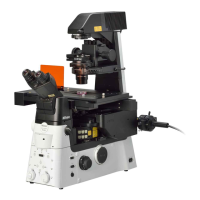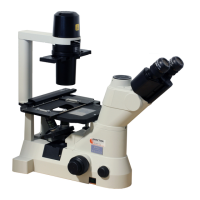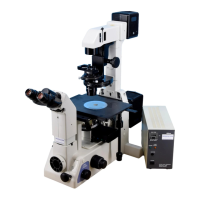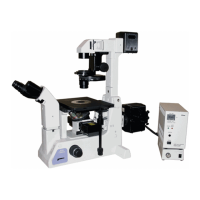Chapter 4 Microscopy Techniques
95
Advantages of Epi-FL microscopy
• Microscopy for only localization and behaviors of interest can be performed by applying fluorescent
labeling to specific tissues, cells, or molecules. Use of multiple fluorescent labels enables several objects
of interest to be observed simultaneously.
• A single fluorescent molecule can also be observed because only objects of interest with fluorescent
labeling are visualized in a very high contrast.
Disadvantages of Epi-FL microscopy
• Irradiation from excitation light or generation of active oxygen might result in specimen phototoxicity.
• Fluorescent material discolors due to irradiation of excitation light, resulting in labeled portions not being
visible.
• Visibility of labeled portions depends on the efficiency of fluorophore immunostaining and fluorescent
protein generation.
4.4.2 Optical Elements Required for Epi-FL Microscopy
Epi-FL microscopy uses the following components.
• Objective
• Epi-fluorescence attachment
• Light source
• FL turret + filter cube
Notes on using laser light source
This manual does not explain microscopy techniques using a laser light source.
When using a laser, see the instruction manual for Ti2-LAPP.
Epi-fluorescence attachment
The following combination is usable:
• EPI-FL module + assorted main branch
Fixed main branch EPI-FL module
Epi-fluorescence attachment
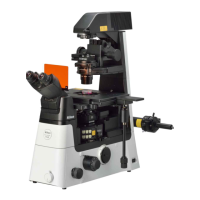
